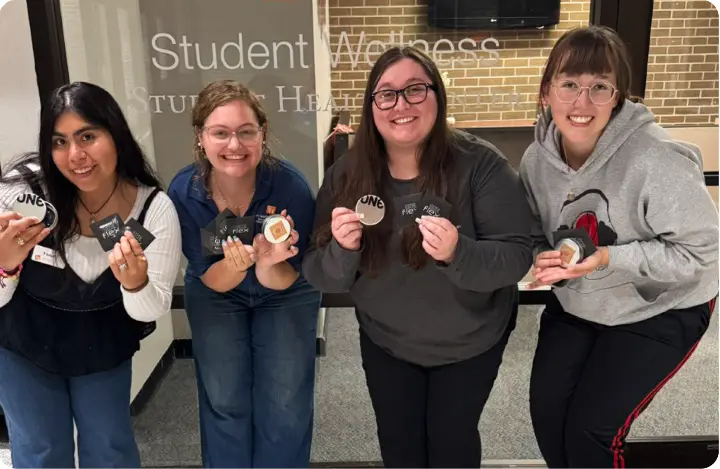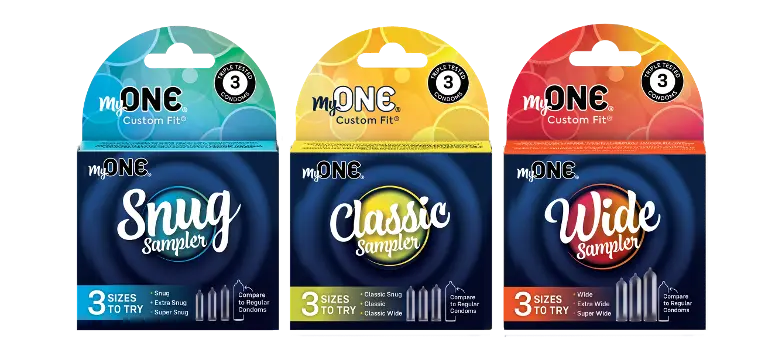Being knowledgeable about safer sex practices is not in itself a predictor of condom usage among teens. A recently published study in JAMA Pediatrics regarding condom use among teens reviewed and analyzed 25 years of research. The data painted a nuanced picture of other variables that are strongly associated with consistent condom usage. Many of these factors align with aspects of social connection, confidence, and communication – three elements that have been priorities in our advocacy efforts here at Global Protection Corp.® (GPC) for decades.
While sexual health educators rightly focus on teaching about the importance of using condoms to prevent unintended pregnancies and socially transmitted infections (STIs), it’s also essential to understand there’s more work to be done. To better impact teens’ decision to consistently use condoms, we can all play a part in ensuring they intentionally plan to do so, are confident buying and using them, and are comfortable communicating with their sexual partners.
Creating Connection through Community Engagement
Consider these study factors associated with consistent condom usage among teens:
- Condom use at first sex: Use of condoms at first sexual intercourse experience
- Condom use intentions: Intentions to use a condom in the future
- Safer sex norms: Perceptions of peers’ attitudes toward safer sex and use of condoms
At GPC, we’ve always believed that authentically meeting people where they are through community engagement is essential to impacting sexual health responsibility. The influence of peers in establishing norms, shaping attitudes, and facilitating usage intentions is a powerful ally in advocacy efforts.
Our approach is that products and programs march hand in hand. That’s why our signature ONE® brand offers a wide selection of condom styles in bulk cases and bowls AND we invest in a host of community engagement programs, including:
- ONE® on Stage, which partners with local bands to distribute condoms and promote safer sex.
- ONE® Project CONDOM, which supports fun condom fashion shows to spark interest and raise awareness.
- ONE® Momentum, which rewards members who complete sexual health challenges and make community connections.
- ONE® College Ambassadors, which recruits campus advocates to distribute condoms and educate peers about sexual health.
We continue to stay committed to grassroots efforts in order to help influence behavior within social circles that people live and play in. At the end of the day, we want to make it easier for people to learn about, talk about, and practice safer sex. Check out our programs above and let’s find ways to partner together to make condoms cool.

Powering Confidence through Product Solutions
Consider these study factors associated with consistent condom usage among teens:
- Condom attitudes: Positive evaluations of condom use
- Safer sex self-efficacy: Confidence in ability to engage in or negotiate safer sex
Successful advocacy is powered by product solutions that meet the unique needs of every condom user. Our history of developing innovative sexual health brands has taught us a thing or two about making condoms that fit right and feel good – imperatives that drive positive perceptions and confidence among users. Nothing is more damaging to promoting condom use than the barriers created from bad product experiences.
Testing new materials to improve user experience:
At GPC, our condom scientists stay busy developing new solutions that address common complaints about condoms. In 2023 we launched ONE® Flex®, the world’s first condom enhanced with graphene. NASA calls graphene a “wonder material” – known for its extreme strength (200 times stronger than steel), thinness (100 times thinner than a human hair), and conductivity.
When bonded together, graphene molecules fill the space between latex molecules, creating a next-gen condom material that advances thinness, flexibility, and thermal conductivity. On its own, latex is an insulator, which prevents condom users from feeling a partner's natural body heat. Graphene, on the other hand, is the most conductive material on the planet. Because ONE Flex molecularly combines latex with graphene, the condom increases body heat transfer by 85% compared to standard latex condoms.
One of the top complaints about ultra-thin condoms is that they often feel tight and restrictive. That’s because on its own, latex can only stretch so far. When combined with graphene, latex stretches farther without feeling tighter. Together, the bonded materials result in more sensation and a natural skin-on-skin feeling.
ONE Flex is available to our resellers in 3-count and 10-count packages. For consumers, it’s available online at onecondoms.com/flex, amazon.com/one, and people can also use our store locator to find it at their local Walmart or Walgreens store.
Instilling confidence through proper condom fit:
Understanding that poor fit is by far the biggest issue with condoms, we spent over ten years on R&D before launching MyONE® Custom Fit® and providing users with a groundbreaking choice of 52 custom fit condom sizes. Many people use the standard condom size successfully, and that’s great news. However, common condom fit challenges include condom slippage (when regular condoms are too long or loose), squeezing, bunching, and erection loss and pain when condoms are too tight.
When condoms fit right and work as intended with no slippage, breakage, or discomfort, people are more likely to use them.
To help our customers and educators talk about proper condom fit in their communities, we created a resource guide for educators to support open conversations about penis size and detailed education about condom fit. We even started an annual holiday called Measure A Penis Day to give people tools, like conversation starters, to spark conversations about proper condom fit and body positivity within their relationships.
By keeping user needs front and center, product innovation paves the path for impactful advocacy.

Facilitating Communication through Honest Conversation
Consider these study factors associated with consistent condom usage among teens:
- Condom communication with partner: Communicated with partner about condom use specifically
- Partner attitudes toward condoms: Perceptions of sexual partner’s attitude toward condoms
We’ve been in the business of sparking sexual health conversations since our founder, Davin Wedel, started the company on his college campus in 1987. There’s no substitute for the trust honest dialogue nurtures between sexual partners and the emotional bond condom use can facilitate in healthy relationships. But initiating and having that kind of conversation can be daunting, especially for teens.
It's important to provide educational information about the benefits of condoms as prevention against unplanned pregnancies and STIs. That’s why we offer a selection of education materials, like pamphlets and posters, to help facilitate everything from teaching about condom facts, to consent conversations and beyond. However, it’s also key to make sure people feel comfortable talking about and actually practicing safer sex. We’re passionate about working with advocates and organizations on educational campaigns, and we strive to engage users with topical content like how talking about condoms can help build intimacy and trust.
This ongoing work is as critical as ever. Similar to the US, consistent condom usage among teens is a challenge everywhere. Recent World Health Organization research in Europe and LetsStopAIDS research in Canada found alarming declines and called for a renewed commitment to education and advocacy.
We’re always excited to learn about and share any resources you may have that facilitate conversations about condoms and sexual health within our communities. We’d love to hear from you!

Journal reference:
Widman L, Evans-Paulson R, Maheux AJ, et al. Identifying the Strongest Correlates of Condom Use Among US Adolescents: A Systematic Review and Meta-Analysis. JAMA Pediatr. Published online January 27, 2025. doi:10.1001/jamapediatrics.2024.5594. https://jamanetwork.com/journals/jamapediatrics/article-abstract/2829638